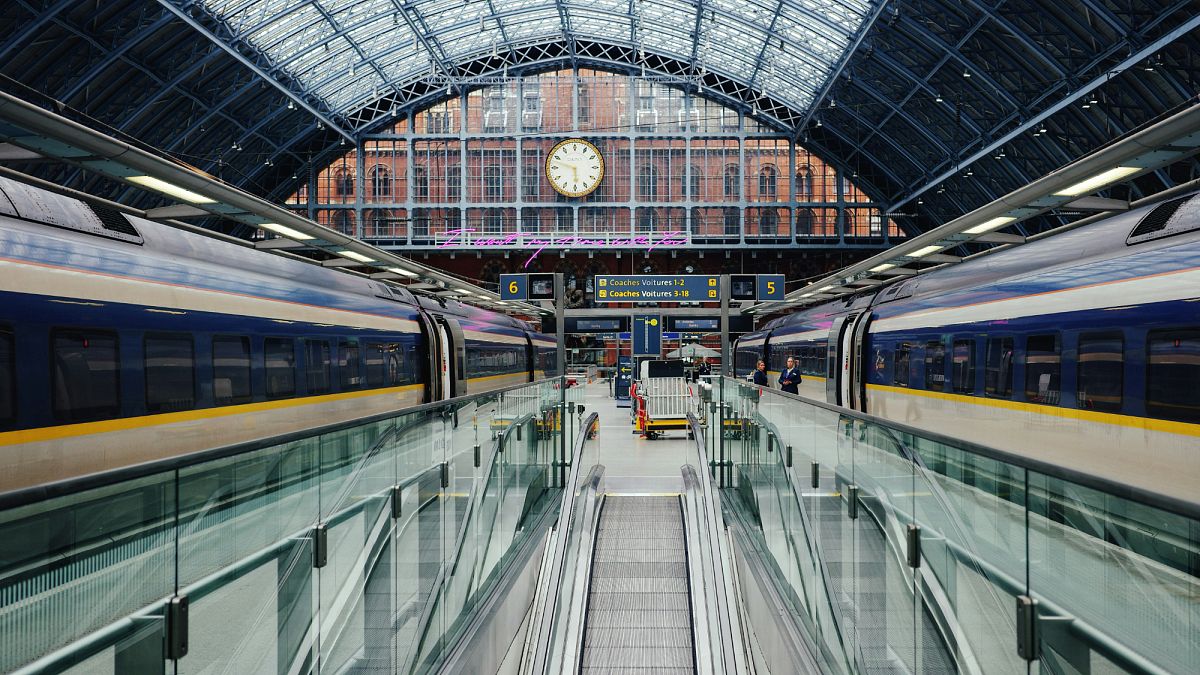Cross-Channel train service Eurostar is allowing passengers to board trains earlier in an attempt to reduce overcrowding at London’s St Pancras station.
Travellers can now take their seats 30 minutes prior to departure, instead of waiting in the departure lounge.
The move is part of a three-stage plan to increase capacity at the station amid predictions that demand for international rail travel is set to triple.
It also comes as part of the transport hub’s preparations for the launch of the EU’s new Entry/Exit System (EES), due to come into force in October this year.
Eurostar services are more popular than ever
As demand grows for international rail travel, St Pancras station has been feeling the pressure.
So far this year, Eurostar has already recorded two of its busiest ever weeks, reaching 136,000 passengers.
The operator says passenger numbers from St Pancras are up 4.23 per cent year-on-year – which works out as an additional 101,000 travellers between January and June.
While it’s a success for the rail company, it has resulted in overcrowding at St Pancras station.
The historic building has limited space, resulting in long queues for check-in, security and border checks. The departure lounge is often so crowded that there is often only standing room available.
The transport hub and Eurostar say the move to allow passengers earlier boarding will ease the queues.
International rail travel from St Pancras projected to triple
Earlier boarding is part of a phased plan to double passenger capacity and ‘future proof’ St Pancras as international rail travel soars in popularity.
Both the transport hub and operator Eurostar say they want to offer a service that competes with the high standards of Heathrow Airport’s Terminal 5.
The aim is to boost international passenger traffic at St Pancras from 1,800 people an hour last year to up to 5,000 an hour over the next few years.
“St Pancras and Eurostar at the highest level are absolutely committed to creating space at St Pancras that is absolutely amazing for the travelling public,” Richard Thorp, chief operating officer of London St Pancras High Speed, told UK newspaper The Standard.
Demand for international rail travel is projected to triple at St Pancras by 2040, from 11 million to 35 million passengers per year.
“We are very conscious of what the competition offers. We need to outperform that and promote what is great about the city centre to city centre transport experience – the ‘café to café’ journey experience,” Thorp added.
Eurostar prepares for the EU’s EES
Border checks between the UK and the EU that came in as a result of Brexit have already caused delays.
There are concerns these will be exacerbated by the EU’s EES – an electronic system which will replace the physical stamping of passports when you go through passport control.
It requires new technology and scanning systems to be implemented at the EU and Schengen Zone borders.
At St Pancras, as well as doubling the number of border staff, Eurostar will also double the number of manual booths.
There isn’t space for all of the new EES kiosks, up to 49 from 24, in their usual location, so they’ll be installed at various other places around the station, currently used by both domestic rail operators and the HS1 service, a high-speed railway linking London with the Channel Tunnel.
Eurostar has also assured passengers that there will be “specially-trained staff available at all times” at the new booths.
The EES will be followed by the European Travel Information and Authorisation System (ETIAS) in late 2026. This will require British and other non-EU passengers to pre-register more details and pay €7 before crossing the Channel, including on the Eurostar.












